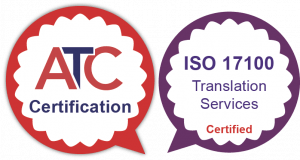The large document that you have been drafting for weeks has finally been finished in English, and now’s the time to put it into all the other languages needed. The translation has to be completed quickly, despite the original having been ‘tweaked’ for weeks.
Does this sound like a familiar scenario? We are often asked by our clients in this case: “How long will the translation take? I need it back ASAP.”
The answer is usually something along the lines of: “Well, it depends!”.
Different files mean varying turnarounds
When we receive a request for translation, one of the first things that we do is take a look at the content and assess the length, how many files there are and the level of similarity between different parts of the text, between the new text and any other texts which have already been translated. We also look at whether there are any complexities in the way the file(s) have been prepared which may require further thought (for example, whether there are translatable images within the text). All of these elements have an effect on the time it will take.

For translation and proofreading of a straightforward text, we would usually estimate an output of 1,000 words per day, to include QC once the translation has been completed (with one day as a minimum). This gives time for both the translator and the proofreader to fully digest and understand the text, as well as for our PMs to go back to the client with queries if necessary.
Specialist content requires longer
Certainly for more complex content, we would not suggest just translating and proofreading the text without any additional linguistic and quality assurance processes, so the time for this should be factored in. With complex assessments or psychometric translations, this ‘rule of thumb’ does not apply as they take longer to do.
Using multiple linguists can cut down the time required, but the text still needs a final proofread by one person for consistency.
Of course, if something is needed really urgently, we do everything possible to meet our clients’ requirements. We can shorten the time taken to complete a translation by using multiple linguists working simultaneously if necessary, but there is still really a need for one final proofread of the entire text once it has been completed, to ensure consistency and coherence of style and meaning. This is best done by one linguist.
Turnaround times come quoted as standard
We will always endeavour to provide turnaround times when we provide a quote or an estimate for a project (by default using a single translator and proofreader, which helps ensure the best result). This will give you an idea of how long it will take to complete the translation.
But the main thing when you are estimating timescales for a project is to be conservative – take your best guess and add some more. I’m sure it will be no surprise that it is still humans who, in most cases, produce the best result – and humans need time to recharge their batteries!
